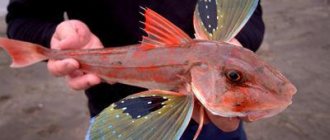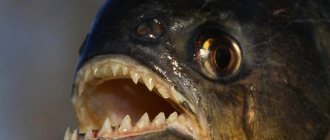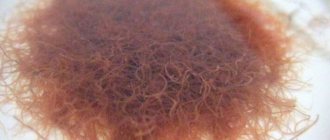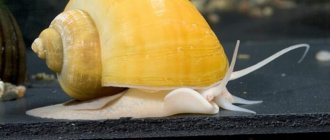Shrimps
Various types of aquarium shrimp are an original addition to the underwater world of fish. They are easy to care for, omnivorous, and their reproduction is not particularly difficult. In addition to their visual beauty, shrimp benefit the aquarium by cleaning it from complex organic debris and algae.
Shrimp with such a bright appearance are doomed to attract increased attention!
Description
Shrimp is considered the most common crustacean; it is used as food by both representatives of the animal world and humans.
Seas, oceans, and fresh water reservoirs are excellent habitats and breeding grounds for shrimp. They are especially valued for their taste and are considered a delicacy, which is why they are used in cooking.
The shrimp is called an unusual, mysterious inhabitant of the aquatic environment.
Contains a large amount of protein and calcium, therefore it is a low-calorie food.
Life span is from one to five and a half years.
Compatible with other shrimp, snails, fish
Although small pets are able to swim quickly, in an aquarium they cannot hide from large or any predatory fish. To prevent crustaceans from becoming just another food, you should not keep them together with the Helena snail, arowana, astronotus, sacbranch catfish, cichlids and other types of aggressive fish.
The peaceful and friendly nature makes it conducive to coexistence with equally calm shrimps such as green babaulti, Amano, Riley, Blue Dream, Cardinal. Microrasbora Galaxy, Swordtail, dwarf tetradon, Danio, Molliesia, Endler's guppies, Neon will also be excellent neighbors.
Kinds
There are more than a hundred different commercial species that are used as a favorite food by humans. For these purposes, special shrimp farms are equipped.
For home breeding in aquariums, there are varieties that successfully live and develop in artificial conditions.
They are classified into freshwater, cold-water, warm-water and salt-water:
- Russia, Australian waters, South Asia are the habitats of freshwater shrimp.
- The North, Baltic, Barents Sea, Greenland, and Canada are inhabited by cold-water shrimp.
- The southern coast is teeming with warm-water shellfish.
- Brackish shrimp are common in salt waters.
- The South American coast, the Black and Mediterranean Seas are the habitat of Chilean crustaceans.
- The king prawn is found in the Atlantic Ocean.
Recommendations for caring for aquarium shrimp
The conditions for keeping freshwater shrimp in an aquarium depend on their species. General indicators of comfort are sufficient oxygen saturation, the presence of aerators and filters. Timely change of water is mandatory.
Aquarium shrimp are not picky eaters. Most of them are omnivores. They feed on leftover fish food, organic waste and algae. Once every few days they need to be fed with daphnia, canned and live food.
You should not feed shrimp with low quality food containing grains. Feed should be rotated to provide a balanced, varied diet.
Whatever type of shrimp is kept, the aquarium must be tightly closed with a lid. Some individuals are very nimble and can easily get out of the tank.
Shrimp of any type and size will enliven your aquarium!
Aquarium freshwater shrimp are amazing creatures with a gentle character and unusual appearance. Their colors are varied - from blood red and deep ultramarine, to delicate azure and complete transparency. These are quite unpretentious inhabitants of the aquarium, which will decorate any artificial fish tank. Shrimp bring not only beauty, but also benefits. They clean aquariums of organic residues, excess algae and moss, regulating their quantity.
All types of shrimp indicated in the article are inhabitants of fresh water bodies!
Appearance
Depending on the species, shrimp vary in color, size and behavior. The body of the arthropod is elongated, flattened in the lateral part. Consists of a cephalothorax and abdomen, the predominant colors are gray-green, pink, blue, with stripes or spots.
The animal grows from 1 to 32 cm in size.
The organ of vision, the eye, consists of a plurality of facets, the number of which increases from year to year. The arthropod perfectly sees close objects due to mosaic vision. It is the visual organs that produce a special hormone that is involved in regulating processes:
- Changes body color.
- Participate in the growth of the individual.
- Affects the number of molts.
- Determines the amount and location of pigment.
- promotes calcium accumulation and metabolism.
The organ of touch looks like the anterior antennae of the antennae. There are five pairs of legs on the abdomen that help in swimming. On these legs, pleopods, the female bears her offspring.
The shrimp moves and thereby washes and cleans its eggs. With the help of flexion movements of the abdomen, the arthropod can quickly move backwards.
The jaw limbs help collect food and bring it to the mouth.
The front pairs of legs of the shrimp are presented in the form of claws. With their help, the shrimp can defend itself and, in case of danger, defend itself with their help. The claw can grab larger prey. The claws of males are much more developed than those of females. The left and right legs can move in different directions at the same time.
The shrimp breathes using gills hidden in its shell. A large blade in the thoracic region helps the water pass through the gills and release oxygen.
Habitat
The habitat of shrimp is seas and oceans; arthropods are ubiquitous.
The young crustacean feeds exclusively on the purest plankton, which makes its meat a particularly valuable and high-quality product.
Scavenger shrimp feed on any organic debris. Favorite delicacies include plankton, juicy algae leaves, soil particles, and young fish. The organs responsible for smell and touch, in the form of antennae, help the shrimp search for food.
Some individuals search for vegetation in the ground, others at the bottom.
Due to their low vision, arthropods see practically nothing in the water at a long distance.
The sense of smell helps to find food and hunt. With the help of developed jaws and mandibles, the shrimp grinds and crushes the prey; this process can take 2-3 hours.
As homemade food, shrimp are fed with a prepared mixture or boiled vegetables and fresh fruits. The shrimp eats leftover food from aquarium fish.
How to start a shrimp tank
Rhino shrimp are capricious to keep. Sometimes it is better to give them a separate place for a full-fledged healthy life, especially since new pets can experience real stress when living in a common aquarium. Beginners should know some useful tips:
- Wash a new aquarium with plain water without chemicals;
- The water being poured must be treated with a special conditioner to get rid of toxic substances: heavy metals, ammonia;
- Under no circumstances should you populate the shrimp immediately; the water should settle;
- Water changes should be done every week by 20% of the total volume. Interesting fact: fresh water is perceived as rain, the shrimp become even more active and begin to “fly” around the aquarium, thus showing their pleasure;
- Twice a month, clean the bottom using a siphon so that uneaten food does not stagnate;
- Do regular water tests;
- Arrange fasting days once a week.
Reproduction
All shrimp are hermaphrodites, i.e. bisexual. The formation of male and female glands occurs over different periods of time. Sexual maturity of a young shrimp begins with becoming a male and only after three years does it become a female. Eggs at the formation stage look like a yellow-green mass.
Individuals mate very quickly, eggs soon appear, which subsequently become larvae. The process of larval formation takes from 10 days to a month.
The larvae are not capable of independently searching for food and lead a sedentary lifestyle.
Natural enemies
A large number of shrimp die in the larval stage. Arthropods are the favorite food of whale sharks, whales, and other planktivores. Shellfish, seabirds, fish, and some mammals also eat shrimp.
She is completely unarmed. The only way to escape from the enemy is to escape; she can hide in a thicket of algae.
Another feature is the possibility of camouflage. The shrimp imitate the color of the bottom and adapt the color of quinine to its surroundings. Animals are caught on an industrial scale. Producers extract from 2 to 3 million tons of arthropods annually.
Population
Due to high fertility and the ability to self-regulate, the shrimp maintains its population at a sustainable level. Even natural enemies, low larval survival rates, and industrial fishing do not cause much damage to the population.
The following features are distinguished:
- When there is a significant reduction in the number of arthropods, individuals begin to reproduce more actively.
- If there is a shortage of food, then females give birth to much smaller offspring.
- The highest quality are arthropods grown in clean, cold water and in a natural environment.
Tiger shrimp is large in size, unusual in color, and has a high meat content. It grows up to 30-40 cm long, green in color, with noticeable dark stripes throughout the body. They are grown on special farms, which makes it possible for suppliers and manufacturers to supply stores and supermarkets with goods. There you can find both fresh frozen shrimp and chilled, boiled, frozen or canned ones.
The northern shrimp is called chilim, it is small in size, up to 6 cm. However, it tastes simply amazing; you can only buy it boiled - frozen.
Video of Pinocchio the Red Nose Shrimp:
Conclusion
Keeping an aquarium is an interesting and rewarding activity. The diversity of underwater flora and fauna allows you to enjoy unique and beautiful views at home. Observing the life and behavior of aquarium pets improves their psychological state and reduces stress. Not only fish are bred in tanks, but it has also become popular to keep various aquarium snails and aquarium shrimp.
The Red-nosed Pinocchio is an unusual invertebrate that will stand out among other aquarium inhabitants. The long rostrum is the main distinguishing feature. Frisky individuals can easily jump out of the aquarium, so you need to be careful when opening the lid. They are demanding to keep and breed, but their great advantage is their rapid adaptation to fresh water. The health of dwarf shrimp and how they can reproduce depends on proper care.
10% DISCOUNT FOR BUYERS FROM REGIONS OF RUSSIA AND CIS COUNTRIES FOR AQUARIUMS, FISH, PLANTS, ETC.
Benefit and harm
By including shrimp in your diet, a person gets:
- A protein product that improves the body's protective functions.
- Reducing the development of heart disease.
- The quality of hair, skin, and nails improves.
- Due to the high calcium content, hormonal levels are balanced.
- Due to the high content of selenium and zinc, shrimp meat has a beneficial effect on male potency and increases testosterone production.
Excessive use of the product in large quantities can cause allergies. It can be especially allergenic for children's bodies. Due to the high cholesterol content, a person should limit himself in eating shrimp. It is necessary to use high-quality and fresh product. It is very easy to get poisoned by expired shrimp. Fever, vomiting, nausea and diarrhea may occur. In rare cases, hospitalization may be necessary.
Preparation
The shrimp is small, large in size, bright pink and earthy brown in color, soft, buttery, sweet and elastic, crispy and almost tasteless.
Shrimp can be boiled, fried and grilled. There are many recipes that include shrimp meat.
Before cooking, shrimp can be marinated by mixing olive oil, garlic and various spices such as oregano, thyme, Italian spice mix, pepper, lemon juice and minced garlic.
Defrost shrimp at room temperature without heating. This way, nutrients are not destroyed and the structure of the shrimp remains intact.
Arthropods are usually fried in hot oil.
Interesting Facts
- Some species grow up to 40 cm long.
- Can change gender during life.
- They are a nutritious low-calorie product. Recommended for use during a diet.
- Recognition and fame came to one Chinese artist after depicting shrimp on his canvases.
- Animals can exist both in the sea and in fresh water.
- The largest shrimp caught weighed more than half a kilogram.
- In ancient times, the Greek peoples ate shrimp.
- To cook, you need to boil the seafood for 3 minutes, but it will be safe for consumption and retain its beneficial substances.
- The heart is in the head.
- The animal can live up to 10-20 years.
- With the onset of night, the shrimp brightens, becomes translucent, and during the day it darkens and changes color.
- The name "king prawn" is a non-scientific species of arthropod. This is what people call her, calling all the great representatives of the royal family.
- Judaism prohibits the consumption of these animals for human food.
- Cold-water shrimp cannot be artificially grown; only the natural environment is suitable for its reproduction.
Strange behavior - what does it mean?
Typically, shrimp are active, scouring the ground in search of food, or freely swimming throughout the aquarium. But sometimes dwarf pets behave strangely and thereby cause concern to the owner.
- Even the frisky red-nosed Pinocchios can become suspicious if they start to behave too wildly. The reason may be a change in water parameters;
- If animals are constantly at the surface of the water or try to jump out of it, then there is not enough oxygen in the aquarium. Aeration should be increased;
- During molting, death occurred - there are not enough nutrients in the water: minerals, protein, calcium;
- While moving, they fall or cannot move at all - a clear sign of poisoning.
Like all animals, Pinocchio is susceptible to various diseases. In most cases, the use of medications is unacceptable. In such situations, a natural method comes to the rescue. For example, sea almond leaves have healing properties:
- stimulate the digestive system;
- increase immunity;
- natural antiseptic;
- bactericidal and fungicidal effect;
- make the pH level optimal;
- an excellent substrate for single-celled organisms that make up the diet of crustaceans.
The collected leaves must be washed, doused with boiling water and dried well until they turn brownish-red. Place one or three leaves in water. After a couple of days they will fall to the bottom, after which they will be successfully eaten within a few days.











